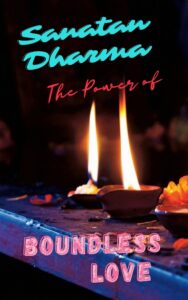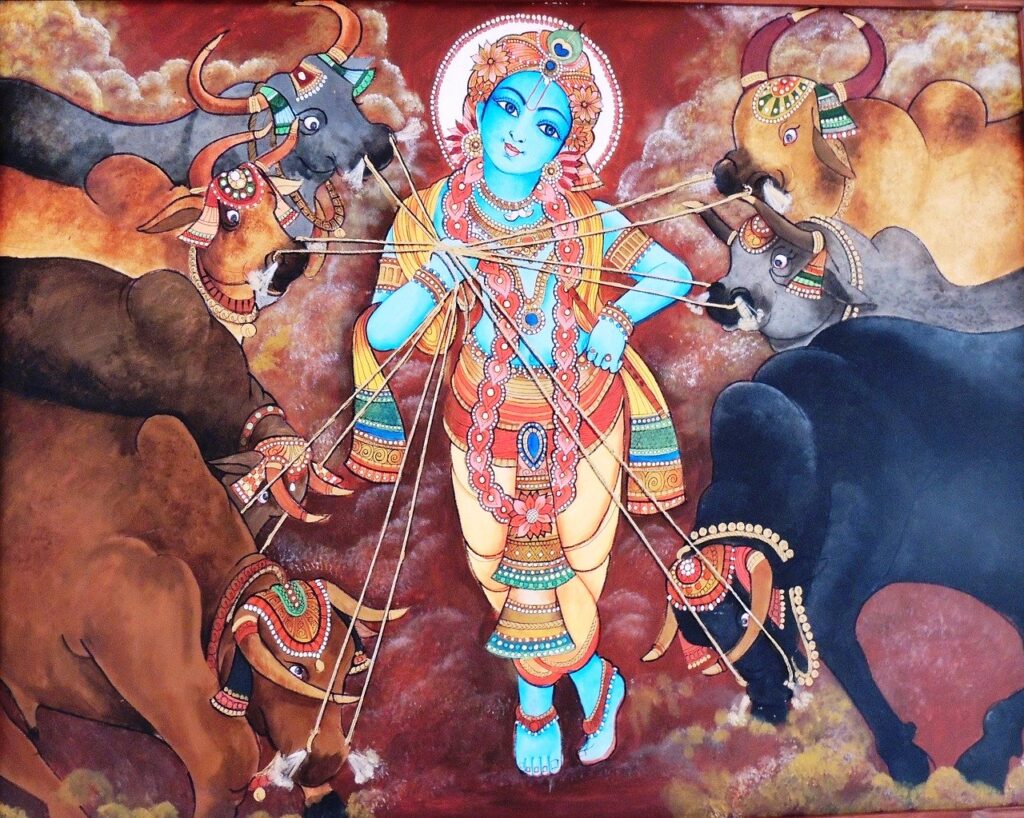
Dharma is often interpreted as “duty,” “religion” or “religious duty” and yet its definition is more profound, defying the concise English translation. The word ‘Dharma’ originates from the Sanskrit root “dhri,” which means “to sustain.” Another correlated meaning of ‘Dharma’ is ‘that which is indispensable and fundamental to something’. The word ‘Sanatan’ translates to ‘eternal’ and the phrase ‘Sanatan Dharma’ alludes to that which is eternally integral to a living entity. That which is ‘Sanatan’ does not have either a beginning or an end. Likewise, ‘Sanatan Dharma’, commonly referred to as ‘Hinduism’ today, is timeless, non-sectarian and not limited by any boundaries. Religion conveys the idea of faith, and faith of a person may change. But ‘Sanatan Dharma’ is that which cannot be changed. For instance liquidity cannot be taken away from water, nor can heat be taken away from fire.
Eternal Nature (Sanatan Dharma) vs Temporary Nature (Naimittika Dharma)
The eternal characteristics or nature (svabhava) of an entity (Vastu) is its Sanatan Dharma. When an entity comes into existence, it is created along with an original fundamental nature. Later, due to circumstances, when this entity comes in contact with other entities, it might develop a change in its nature. Over time, this changed or acquired nature (naimittika dharma) becomes firmly established and accompanies the entity just like its original eternal nature (Sanatan Dharma). But this acquired nature should not be mistaken as the original nature of the entity. These changed characteristics of the concerned entity (vastu) are called ‘nisarga’.

For example, water is an entity, and liquidity is its eternal nature (Sanatan Dharma). But when this same water is frozen into solid ice, then its liquidity is no more apparent. Instead, the solidity of ice becomes its acquired characteristics (naimittika dharma). But the ‘nisarga’ or acquired nature of an entity is never permanent. It arises due to a temporary circumstance and when the circumstance changes, the entity regains its original nature.
The original nature or the Sanatan Dharma of an entity is eternal. Even when a modified nature (naimittika dharma) is manifested, the original nature prevails, although it may be dormant. In the course of time when the conditions are favorable, the original nature manifests itself openly once more. In our example, the solid ice changes into liquid water as soon as the freezing conditions are eliminated.
What is the ‘Sanatan Dharma’ of Man ?
According to Sanatan Dharma, the eternal and intrinsic nature of a living entity (atman), including Man, is to perform seva (service). Sanatan dharma, being transcendental, refers to the universal and axiomatic laws that are beyond our shifting belief systems. If we deeply study the world around us, we would not find anyone who is not serving someone else. The father serves the son, the son serves his father,the wife serves her husband, the doctor serves his patients, the king serves his subjects, and so on. If someone has no one to serve, then he/she keeps a pet in his/her house and serves him. Thus, all of us are bound to serve, because by nature, the soul is a servant, and service is a natural characteristic (Sanatan Dharma) of the soul.
The Vedic literatures, which are the oldest scriptures in the world, give us some much-needed insight on this subject. The Vedic scriptures, composed mainly in Sanskrit, and which encompasses a huge volume of texts and manuscripts, provide a detailed analysis and a first-hand experience of significant historical events, with a purpose to teach us the science of life. The Vedic scriptures, that form the very basis of the tenets of Sanatan Dharma, conclude that Man achieves the perfection of his existence only when he dovetails his eternal nature in serving the Supreme Lord. Instead, if he chooses to serve his own senses or his false ego, then he encircles himself in a material quagmire that only makes him suffer in multiple ways.
Jivera svarupa haya Krishera Nityadasa
Krishnera tathastha shakti bhedabeda prakasha
(Chaitanya Charitamrita)
–
The original nature of a living entity is to be an eternal servant of Lord Krishna. The living entity is the marginal potency of the Supreme Lord Krishna and is simultaneously one and different from the Lord.
The service attitude that a soul possesses towards Supersoul, is not based on any obligation, but is instead built on a foundation of a loving relationship. The whole purpose of our existence is to render loving devotional service unto the Supreme Lord, recognizing Him to be our ever well-wisher and our eternal object of love. Out of 8.4 million species of life, a human being is the most conscious and is perfectly equipped to attain complete spiritual realization. Hence one should not waste the precious human form of life and instead utilize it for God-realization from an early age. If we examine the life and history of people living in various parts of the world, we shall come to realize that faith in God is universal and a natural characteristic of people in general. Even the uncivilized tribes living in the forest, worship trees, rivers, mountains, etc, and exhibit their reverence towards the divine.

Living entities, including man, are spirit souls that are part and parcel of the Supreme Lord. The soul can neither be destroyed by any weapon, nor be damaged by water, fire or wind. The soul or the spirit, neither takes birth, nor does he ever suffer death. Instead, the soul goes through a process of transmigration, from one body to the next, in a quest of attaining perfection. The soul finally attains a stage of perfection when it is able to rekindle its lost relationship with the Supreme.
Contrary to popular beliefs, Yoga is not merely a set of physical exercises. Instead it is a gradual process of uniting the soul with the Supersoul, thereby perfecting the existence of a living being. Sri Krishna states in Bhagavad Gita that the highest of all the yogis is one, who with great faith always abides by the Supreme Lord and constantly thinks of Him within Himself, rendering transcendental loving service unto Him. Sri Krishna proclaims, that such a yogi (devotee) , is the most intimately united with Him in yoga and the highest of all.
Yoginaam api sarvesam mad gatenantar atmana
Sradhavan bhajate yo mam, sa me yuktatamo matah
(BG 6.47)
Sri Krishna thus confirms in Bhagavad Gita that rendering transcendental loving service unto Him, is the highest truth and the ultimate path to achieving perfection in one’s life.
The science of Life :
Spirit and matter are fundamentally opposed to each other. One can either live in spiritual or else in material consciousness. Likewise, material and spiritual attachments are inversely proportional to each other. Lord Krishna, the Supreme Lord, is the master of countless potencies.
parasya saktir vividhaiva sruyate – His energies are innumerable and immeasurable (Svetasvatara Upanishad 6.8)
These potencies can be grouped primarily into internal, marginal, and external. The internal energy of the Supreme Lord constitutes the eternal, blissful, and cognizant spiritual world. Those who possess a spiritual consciousness and seek the shelter of the Supreme Lord fall within the purview of the Lord’s internal energy (Hladini shakti). On the other hand, this temporary world of matter falls within the purview of the Lord’s external energy (Bahiranga shakti). The living entities of this world, however, belong to a third category. They belong to the marginal potency or the ‘tatastha shakti’ of the Supreme Lord. ‘Tata’ refers to the region between land and water, and hence it holds the properties of both. Therefore ‘tata’ cannot be referred to as belonging purely to either land or water. Similarly, the living entities of this world have a choice to serve either the world of spirit or the world of matter. Though the living entity is a part and parcel of the Supreme Lord and spiritual by nature, yet sometimes it may become overwhelmed by this temporary world of dull matter. Those living beings who grow bewildered by the illusory energy (Maya) of the Lord and consequently try to enjoy this temporary material world, become controlled by the external potency (bahiranga shakti) of the Supreme Lord. These unfortunate souls deviate from their constitutional position as a servant of the Supreme Lord and indulge in sense gratification by serving their material senses and trying to Lord over matter. However, their efforts only die in frustration as flickering sensual pleasures can never fully satisfy a living being who is eternally hankering for pure spiritual bliss. Such a misguided person, then attempts to rediscover the loving relationship it once possessed with the Supreme Lord, within the purview of matter, and thus gets entangled with material possessions. But in the process, neither does he get satisfied, nor the person/s he is serving becomes fully satisfied- due to the misdirected nature of such service, which should be directed towards the Supreme Lord instead. On the other hand, those wise living entities, who choose to engage in the devotional service of the Supreme Lord, become controlled by the Lord’s internal energy (Hladini shakti) and are protected by Him.
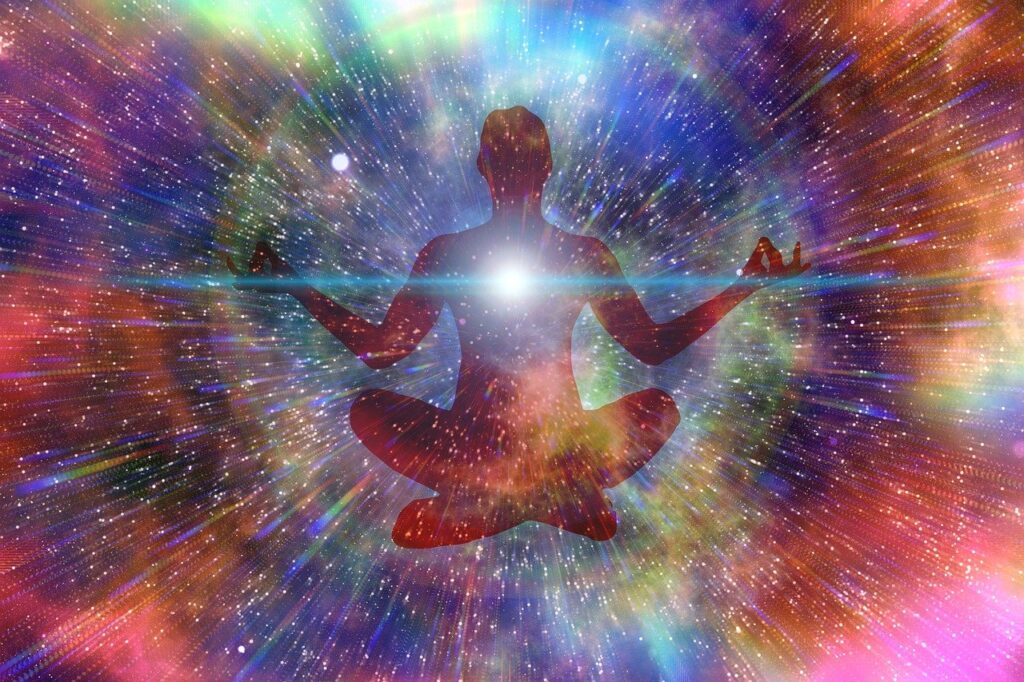
Misdirected service – Root cause of all evil
A spirit soul is always in love. Constitutionally, it is meant to love and be loved. This propensity of the soul to render loving devotional service is completely satisfied when it is directed towards God, the Supreme Spirit. Katha Upanishad states that the Supreme Lord is the Supreme eternal amongst all the other eternal beings. He is the fundamental conscious being among all the other conscious beings (Nityo nityanam cetanas cetananam). A spirit soul is a part and parcel of the Supreme Lord and is bound to Him by love.
However, when a living entity or a spirit soul, grows forgetful of this eternal loving relationship with the supreme, he gets overwhelmed with this temporary world of matter. As the soul always seeks love (devotional service), therefore when it loses touch with the divine, it becomes attached to inferior material objects. However, a loving relationship with the Supreme Lord that bestows ecstatic spiritual bliss can never be substituted by love and attachment for dull matter, which only renders flickering sensual pleasures. As self-satisfaction grows far-fetched, one begins indulging in serving his senses more and more. The greater the extent of one’s material entanglement, the further is one’s alienation from his eternal spiritual reality. The absence of divine love frustrates the soul because the soul only hankers for eternal spiritual bliss.
Just like the Supreme Lord, a living entity is also eternal (sat), cognizant (cid), and full of bliss (ananda). The Supreme Lord is like the sun while the living entities are like sunlight. Living entities are like sparks emanating from the blazing fire of the Supreme Lord. So though the living entities are qualitatively the same with the Lord, the difference lies in their quantity. When this living entity disregards God and forgets Him, he at once comes under the influence of material nature. At that time, he develops several temporary characteristics (Naimittika Dharma) that eclipse his eternal inclination to serve the Supreme Lord. Consequently, this temporary nature of the living being overshadows his eternal blissful nature, and may even manifest itself in the form of greed, anger, lust, envy, depression, anxiety, etc. However, it must be remembered that the original eternal nature (Sanatan Dharma) of the living entity is never lost. It unveils itself at the appropriate time, as soon as the living being rejects his degraded material consciousness. Just as vapour transforms itself back into its original form of water, as soon as the boiling conditions are eliminated, similarly the living entity regains his original blissful nature as soon as he awakens his eternal loving relationship with the Supreme Lord.
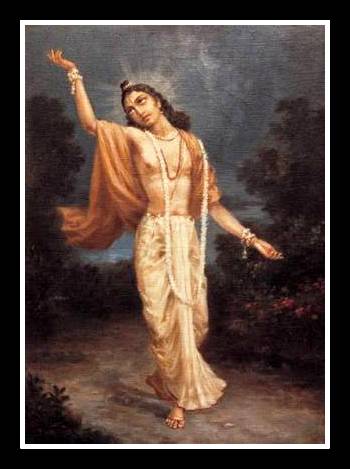
Is Sanatan Dharma Sectarian?
The sun may be called by different names but remains one no matter how widely we travel. Similarly, God is one though He might be called upon differently by different people. Likewise, the laws of physics or mathematics are universal, although students might study them in various universities. Similarly, though one might accept a particular authorized religious tradition, the ultimate goal to render devotional service unto the Supreme prevails. Those belonging to some sectarian faith will wrongly consider that Sanatan dharma is also sectarian, but if we go deeper into the matter and consider it in the light of modern science, we shall discover that Sanatan dharma is the affair of all the people of the world, nay, of all the living entities of the universe. Hence, most adherents prefer to call their tradition Sanatan dharma rather than using the more recent term, “Hinduism”, which they consider has sectarian connotations.
Does Sanatan Dharma imply rejection of matter?
Now one may ask whether practicing the teachings of Sanatan Dharma imply the rejection of anything that is material. One may also wonder if he/she ought to give up their dwelling in the city, let go of their phones/gadgets, and take up a residence in the forests or the mountains instead. Well, the precise answer is ‘No’. When we say that one needs to give up matter, what we propose is that one abandons his/her illusory perception of ‘I’ and ‘Mine’ that originates from a material identification of the self. In other words, one needs to renounce serving his/her material senses and instead try and use everything in the service of the Supreme Lord, which is in his/her ultimate spiritual interest.
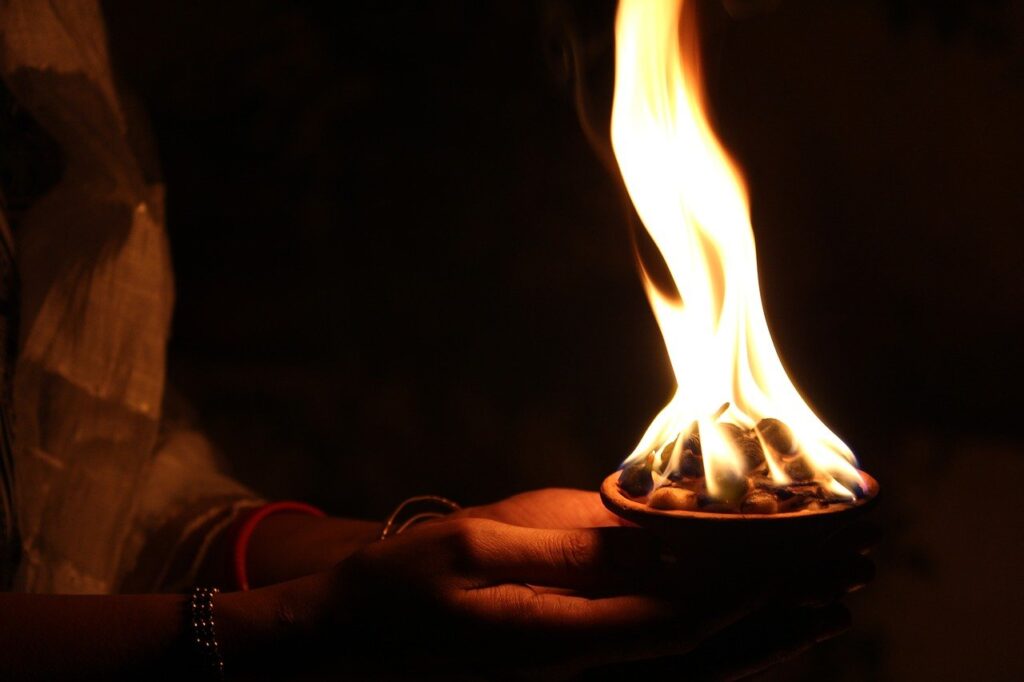
When one practices ‘Sanatan Dharma’ and acts to accomplish their spiritual objectives, then one can utilize matter to achieve those ends. For example, one can use the internet to read this website article. One can buy spiritual books online, to enhance his/her spiritual understanding. One can even write books/articles, compose songs/music, etc in order to help others in their spiritual journey. When matter is utilized for spiritual goals, then it no longer remains a part of the material energy. As long as one lives in this material world, and possesses a material body, he/she requires to interact with matter. But if the purpose of that interaction is simply to serve one’s own senses, then the particular person acts on a material platform. Instead, if one interacts with matter in order to serve and please the Supreme Lord, then one no longer entangles himself in this material predicament. So though a spiritualist interacts with matter, just like a materialist, yet there prevails a stark difference when it comes to their consciousness. A materialist puts himself at the center of his world while a spiritualist places the Supreme Lord at the center of all his actions.
atmendriya priti vancha taare bali ‘kama’
krishnendriya-priti-iccha dhare ‘prema’ nama
(Chaitanya Charitamrita)
–
The desire to gratify one’s own senses is called kama (lust), but the desire to please the senses of Lord Krishna is known as prema (love).
One who recognizes Sanatan Dharma, will always endeavor to revive his/her eternal relationship with Krishna, the Supreme Lord. He shall no longer identify with matter and possess no interest in petty sense gratification. Instead, matter then becomes a means to engage in loving devotional service of the Supreme. Such a man’s involvement with this world is no longer based upon a false conception of the self and is no more motivated by sensual pleasures. He no longer traps himself in an illusory web of ‘I’ and ‘Mine’. Engaging in selfless loving devotional service unto the Supreme, he successfully revives his eternal, blissful, and cognizant nature.
Practicing Sanatan Dharma :
The Bhagavad Gita teaches how this material world is exceedingly difficult for a living entity to overcome (mama maya duratyaya). But this incredibly challenging objective is easily accomplished by those who surrender unto Sri Krishna, the Supreme Lord and seek His divine shelter (mam eva ye prapadyante mayam etam taranti te). Such a person can control his mind, transcend material nature, and even his material desires. Such a perfect devotee rejoices in boundless spiritual bliss and is not shaken even amidst the greatest of difficulties. This certainly is actual independence – freedom from all miseries (anxiety, depression, fear, etc) arising out of material contact. Such a person identifies everything as part and parcel of the Supreme and tries to engage them in the service of the Supreme Lord. Everything else takes a backseat, while serving the Supreme becomes his primary objective.

Now, one might question as to how one can take shelter or serve the Supreme Lord practically and revive this state of spiritual consciousness. Does it only demand an adjustment of intellectual perception or does it also require certain spiritual practices? The ancient Vedic scriptures proclaim that chanting the holy Name of Supreme Lord Hari is the only practical and effective means of cultivating spiritual realization (devotion) in this present day and age. Nothing else is as powerful.
Harer nama harer nama harer namaiva kevalam
kalau nasty-eva nasty-eva nasty-eva gatir anyathaa
(Brhad Naradiya Purana)
–
In this age of Kali the only means of deliverance is chanting of the holy name of Lord Hari. There is no other way. There is no other way. There is no other way.
Love for the Supreme Lord is not something that can be achieved artificially from an external source. It is eternally existing within the hearts of all living entities. When the heart is purified by the process of regular hearing and chanting the holy names, glories of the Supreme Lord, this eternal love awakens and reveals itself once more.
nitya-siddha Krishna-prema ‘sadhya’ kabhu naya,
sravanadi suddha chitte karaye udaya
(Chaitanya Charitamrta, Madhya, 22.107)
–
Pure love for Krishna is eternally established in the hearts of the living entities. It is not something to be gained from an external source. When one’s heart is purified by the regular hearing and chanting of Krishna’s holy name and glories, this love naturally awakens.
